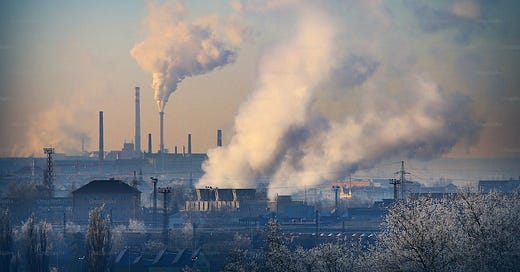Thermal coal's Coasian bargain
Paying coal plants to retire early is a viable route to net zero
As a source of energy, thermal coal has many advantages: availability, affordability, reliability, and security.
These are by far the most important characteristics of any energy source, especially for economies in the early stages of their development. Historically, it is only at later stages in their development that citizens pressure their government for cleaner forms of energy (see Prosperity bends the curve).
Recent history in the developed world suggests that thermal coal can persist as a dominant energy source long after cheaper and cleaner sources of energy are available. For example, economies that are heavily reliant on thermal coal generation often face strong resistance to change from workers and the communities they depend on.
This is also a factor today for many countries heavily dependent on coal, despite the potential to switch to a greater share of renewable generation. The average age of active coal plants in Asia is estimated to be around 13 years, compared with well over 30 years in Europe and North America. If these relatively young coal assets are allowed to continue to operate until the end of their designated operating lifespan they will spew many millions of tonnes of carbon dioxide into the atmosphere.
The thermal coal supply chain (i.e., mining firms, power stations, equipment-makers and the banks that finance them) is often owned or controlled by the state. That means there is little incentive for the government of the day to introduce sweeping changes, lest they face the wrath of their citizens. Incentives being as they are there is little point in the domestic coal industry attempting to be more efficient, or moving away from the status-quo.
Although flexible generation like coal has a role to play in balancing grid demands as intermittent solar and wind generation take on an increased share of the generation mix, the development of storage and demand side options will mean this role is increasingly obsolete over time. In addition, having coal assets on the books of utilities is increasingly resulting in financial institutions demanding a higher cost of capital - an obstacle in the way of investing in decarbonisation.
Price signals, or the lack of them, are also important. Apart from Europe and a few other jurisdictions, carbon prices are either non-existent or too low to have an impact on the relative cost of generating electricity using coal versus natural gas or renewable energy. Many countries in Asia (including China, Indonesia, Vietnam, etc.) are highly dependent on thermal coal, and have either introduced carbon pricing, or are in the process of doing so. For the most part though, carbon prices remain well below levels necessary to stimulate a gradual phase out from coal (see Why Asia is pivotal to future carbon market growth).1
Even if carbon prices were introduced at a level that could theoretically move the needle, there is no guarantee that it actually will bring about change. Thermal coal generation is often heavily insulated from market forces, whether that’s through long-term contracts such as power purchase agreements, or other policies that insulate domestic coal prices from global markets. The think tank RMI estimates that 93% of the world’s coal plants are insulated from market forces through just these kinds of policies.2
The Coasian bargain
As regular readers of Carbon Risk will know, I typically focus on the role that carbon markets have in decarbonising the economy and helping investors navigate the various markets. A carbon price seeks to internalise the cost of the negative externality associated with exceeding the available carbon budget. The approach is often associated with the economist Arthur C. Pigou and is ideally set at the marginal social cost of carbon. In doing so, carbon prices provide an incentive to decarbonise in the most efficient way possible, recognising that there are other demands for scarce resources, and that governments (or some other central body) are unlikely to be able to allocate capital (via infrastructure, innovation, etc.) as well as the private sector.
However, there is another way of thinking about carbon risk and how capital can be used to move the economy towards an efficient outcome.
Its a bit controversial. Let’s dive in.




